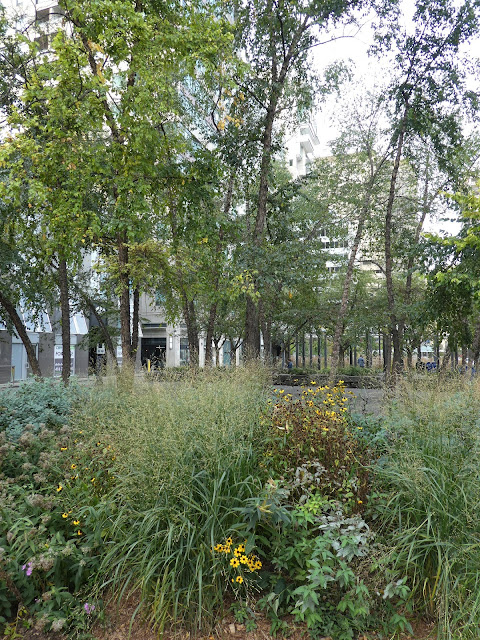Grenadier Pond
Ducks
Grenadier Pond
Hillside garden
Black oak savannah
Black oak savannah with birch trees. Photos taken in October 2017
On Monday October 23, I took the subway to High Park at 9 AM. It was beautiful. I walked across a vast lawn filled with large trees spaced at regular intervals, some with bright, falling leaves. Below that was a large pond filled with natural vegetation & ducks. There was a natural forest on the slope above the pond in an area called the West Ravine Nature Trails. People were walking & jogging along the paths. I walked back up to the slope through the Hillside Gardens. The Japanese garden along the creek was nice enough. But overall, I was not impressed with that area. The giant maple leaf was tacky. There was a more impressive forest of black oak savannah at the top of the hill.
That was that all I saw. There is much more to High Park. It is a big urban park covering 400 acres (161 hectares) & a perfect respite. It also has a swimming pool, playground, sports fields, cafe & zoo. High Park opened in 1876. The central section is a large plain that is mostly developed. But a significant portion is a rare, natural black oak savannah. Oak savannah is much more common in the US & Mexico. Black oaks (Quercus velutina) grow throughout High Park & many are more than 150 years old. Forested areas are maintained in a natural condition. The lovely Grenadier Pond covers 35-acres (14.2 hectares) on the western edge of the park. On a section of the hillside east of the pond, there are the various Hillside Gardens. The giant maple leaf-shaped flower bed is visible from the top of the hill. It looks better from a distance.










































































